Kriya Yoga is a meditation technique which takes us inside to Silence, to a level of no conflict. The techniques are based on the breath, the awareness and the energy centers (chakras) in the spine – developed and tested through thousands of years, based on a rich and ancient tradition.
The techniques are simple and effective. In a retreat one receives inititation in the 1st Kriya which comprises of six techniques. There are further higher Kriyas, up to the 7th, which is subsequently given according to individual’s preparedness through regular practice.
When the body is born we start to breathe, when the body dies the breath leaves the body. This is happening all the time, we are breathing in and out. We inhale new life from the source, and we exhale that which is dead from the body. To realize who we are, our unity with life, we have to be consciously connected to the source of life through the breath.
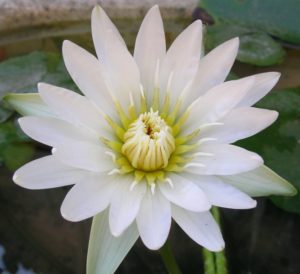 Kriya Yoga is described in Paramahamsa Yogananda’s “Autobiography of Yogi” as an instrument through which the human evolution can be enhanced. The secret about higher states of consciousness is that it is intimately related to the breath. The word yoga comes from Sanskrit yuj which means union – the union of the individual soul with Spirit. Kriya Yoga is a method to attain the union of breath and soul in each inhalation and exhalation. Kriya means action and yoga unification. Kriya Yoga is action that leads to unification, to the state of no conflict in the consciousness.
Kriya Yoga is described in Paramahamsa Yogananda’s “Autobiography of Yogi” as an instrument through which the human evolution can be enhanced. The secret about higher states of consciousness is that it is intimately related to the breath. The word yoga comes from Sanskrit yuj which means union – the union of the individual soul with Spirit. Kriya Yoga is a method to attain the union of breath and soul in each inhalation and exhalation. Kriya means action and yoga unification. Kriya Yoga is action that leads to unification, to the state of no conflict in the consciousness.
In the Indian scripture Bhagavad Gita this theme is thoroughly illuminated. Here we read about the warrior Arjuna, who is the best bowman of his time, and whose life task is to fight for good against all challenges. However, staying at the battlefield Arjuna is paralysed by an inner conflict: he may have to kill family members as they side with his enemy. Arjuna is irresolute and unhappy, and unable to take action until Krishna (Kriya Yoga) comes to help him. Arjuna’s consciousness is lifted to the level of unity, where no conflicts exist. As a result, Arjuna is capable of fulfilling his divine mission in life.
A good life without inner conflict is a fundamental human need. Those who faithfully and sincerely seek the Self, and who gradually receive the higher Kriya techniques, acquire insight into the deeper meaning of meditation. The source of knowledge is infinite, and the interaction between the Self and life itself is vital to realize unity in the consciousness.
Kriya takes us to subtle levels in the consciousness. Closeness to the breath brings us to the lotus flower of non-duality, to a level of deep inner Silence. In this way alertness and love are manifested as a state of consciousness. Neither the intellect nor the senses are able to bring us to this state. Only the breath, the life force, has the power to take us to the Self, the Divine.
With regular Kriya practice, one is building inner Silence which gradually becomes a part of us. As a result, one is more calm and peaceful in all aspects of life.
Kriya Yoga Tradition
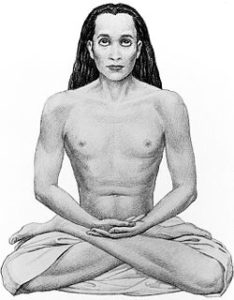
Mahavatar Babaji
Mahavatar Babaji Maharaj is both ageless and eternally young. Sometimes he is formless, while at other times, he appears before his disciples in any form he wishes to liberate humanity from its worldly fetters.
Mahavatar means “Divine Incarnation”, a title bestowed on Babaji. This Himalayan yogi is said to incarnate himself each time that it is necessary to relight the Kriya Yoga flame. He is the deathless mahavatar who in 1861 gave Kriya Yoga initiation to Lahiri Mahasaya, and thereby restored to the world the ancient technique of salvation.
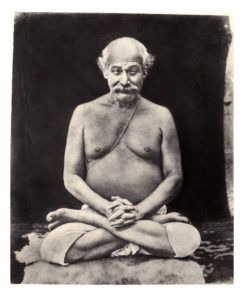
Sri Lahiri Mahasaya
Kriya Yoga was taught to Lahiri Mahasaya in the last century by a Himalayan yogi known under the name of Babaji. The story of Lahiri Mahasaya’s meeting with Babaji is related in Paramahansa Yogananda’s book, Autobiography of a Yogi.
Lahiri Mahasaya was a layman householder but he had obtained the highest realization by the means of Kriya Yoga. He soon became famous and many disciples came to him. He taught Kriya Yoga to monks as well as to householders. He has been called a Yogavatar, “an incarnation of Yoga”.
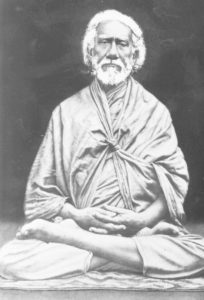
Sri Yukteswar Giri
Among Lahiri Mahasaya’s best disciples was Sri Yukteswar who was also a married man. Later he joined the monastic order and was known as Swami Yukteswar Giri. Sri Yukteswar was also a great astrologer, and created a form of astrology which he called Cosmic Astrology. This system establishes the relation between the planets, the stationary stars, the signs of the zodiac and the energy centres (chakras) situated in the human body. This astrology is therefore in direct relationship with the practice of Kriya Yoga.
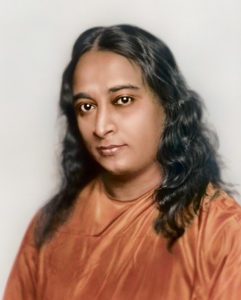
Paramahamsa Yogananda
Paramahamsa Yogananda (1893–1952) is considered one of the pre-eminent spiritual figures of modern times.
Paramahamsa literally means “supreme swan (soul)”, and this title was bestowed on Yogananda by Swami Sri Yukteswar in 1935. Paramahamsa Yogananda, author of “Autobiography of a Yogi”, was one of the first Indian yogis to come to the West. Residing in the United States until his mahasamadhi (a yogi’s final conscious exit from the body) in 1952, he had an important part in spreading Kriya Yoga around the world.
